The IDF on Wednesday brought The Jerusalem Post and selected other media outlets to view Hamas’s terror infrastructure at Al Shifa Hospital, especially its several-hundred-meter tunnel network, up close.
This was the first time that a reporter from the Post had crossed into Gaza since the IDF withdrawal in 2005, and it brought up close everything the IDF had found since November 15 that Hamas had tried desperately to hide at Shifa Hospital.
Laid out next to the Qatar facility within the Shifa complex was a vast amount not only of Hamas guns and grenades which the IDF found hidden throughout the hospital, but also rocket-propelled grenade launchers, large and small advanced drones for delivering explosives, and a variety of sophisticated intelligence platforms.
JPost enters the depths of Hamas's terror tunnels
The vastness of the tunnel itself, with the Post viewing a variety of sophisticated rooms and the blast door which the IDF displayed earlier this week, was testimony to how important this location was to Hamas.
Among the rooms was a spacious bedroom with two large beds and a large modern air conditioning unit, a kitchenette, a bathroom, and other facilities, as well as extensive plumbing and electrical wiring to enable all of the infrastructure.
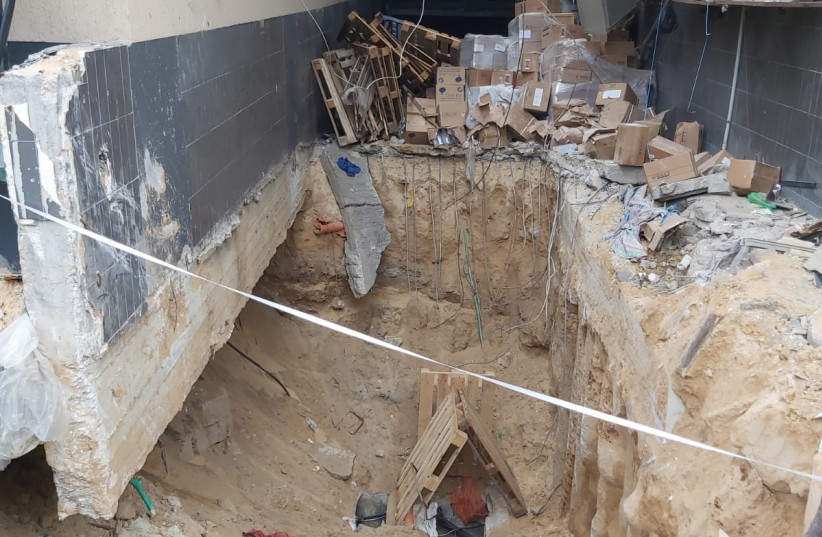
Two members of the IDF’s special Yahalom unit for uncovering tunnels and IDF Chief Spokesman Brig.-Gen. Daniel Hagari described the process of discovering the tunnel as a “huge riddle.”
They had intelligence about Hamas’s tunnel network at Shifa Hospital long before arriving at the site. However, not only is the hospital site immense, with an extensive number of spread-out buildings and courtyards, but also, they said, they had found signs that Hamas went out of its way to cover up and fill in the already well-concealed tunnels once they suspected that the IDF might take control of Shifa.
This meant that the Yahalom unit had to survey and inspect a large amount of land and courtyards around and between the Shifa Hospital buildings.
An initial breakthrough came on November 17 when the IDF destroyed a small structure that looked suspicious and was able to find one of the shafts and entrances to the greater tunnel network under the rubble of that structure.
The IDF showed the Post where the structure had previously stood and the initial shaft of the tunnel which they found, including the unusual spiral staircase which the IDF had presented at a press conference.
However, only several days later were they able to locate the more important part of the tunnel network, including all of the specialized rooms, likely used by Hamas battalion commanders.
Part of the delay was due to the priority of searching room-to-room for Hamas terrorists, weapons, intelligence, and anything linked to hostages or murdered Israelis.
Another delay came when the IDF announced on November 19 that it had arrived at a blast door whose breach required great care if troops were not to lose the opportunity to follow the tunnel beyond the door.
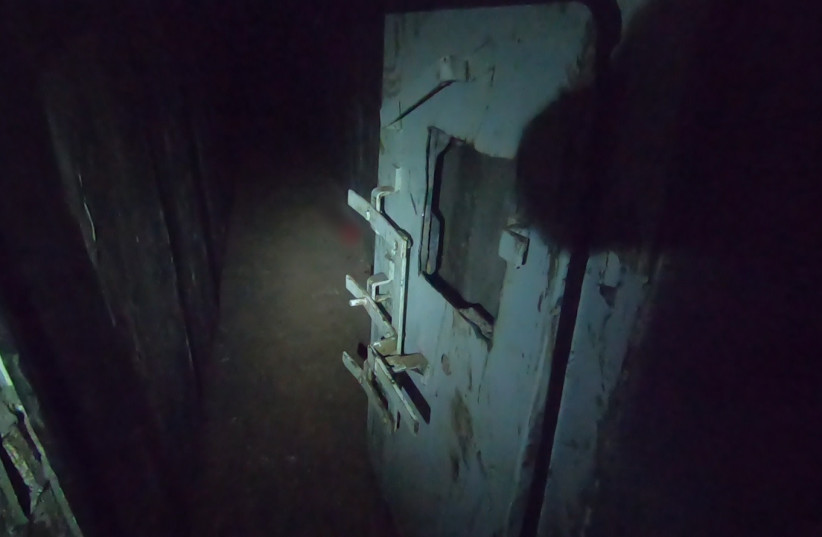
The Post was able to see the broken door and the hundreds of additional meters of the Hamas tunnel network beyond that point.
A taste of Hamas's Shifa secrets
The extensive weapons that IDF Col. Elad Tzuri presented were, he said, just a taste of what Hamas had hidden throughout the Shifa Hospital complex, considering that all the displayed weapons were only found in the last 48 hours.
This meant that all of the weapons, military equipment, and intelligence material that the IDF seized and publicized to the world in the early days of the Shifa-Hamas discoveries, including those hidden behind an MRI machine, were located in another area.
Tzuri said, “These items were found both in indoor and outdoor common areas – courtyards of the hospital as well as in patients’ rooms, and some in the vehicles of Hamas’s Nukbeh [elite] unit,” which were found on the hospital’s grounds.
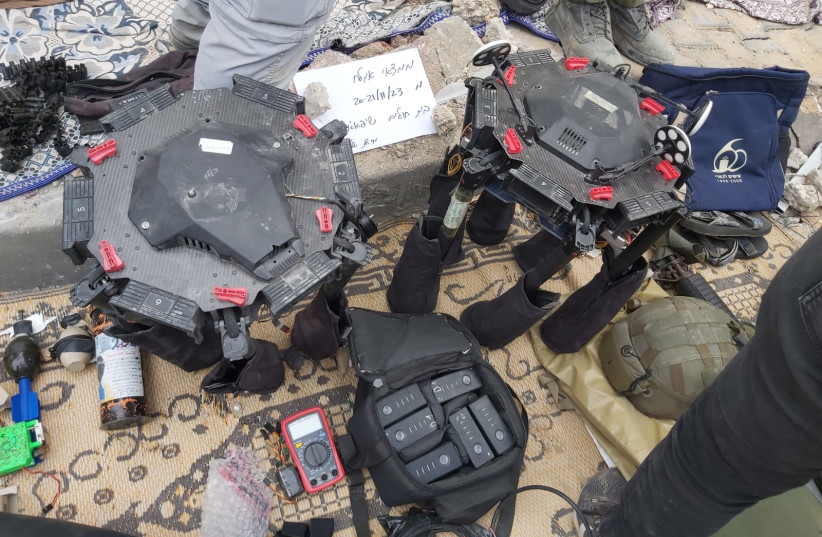
Further, Tzuri noted that the IDF had found RPGs, improvised explosive devices, grenades, guns, drones, and materials used by Hamas naval commandos.
The IDF colonel said that Hamas had been completely rooted out of the Shifa area which was once one of its top locations, but that there were still pockets of Hamas resistance in other parts of northern Gaza.
Tzuri admitted that until he was given the order to go into Shifa, he had never imagined he would set foot on such a key Hamas command center, but added that he felt it was an honor to have been given the mission “to allow future generations of our children to live securely.”
In addition, Tzuri emphasized how the initial Hamas tunnel shaft discovered was near the outside of the Shifa complex, whereas the other end of the tunnel with the extensive rooms, was right next to the Qatari facility deep within the complex.
Hagari pointed out to the Post a spot some 50 meters away where the body of hostage Noa Marciano was found concealed after Hamas killed her.
IDF Maj. “D.” of the special forces Maglan Unit described to the Post special orders and training that he and his unit were given for handling medical staff and patients as they took control of the complex.
Senior IDF officials have emphasized that they were deeply involved in ensuring that Maglan soldiers had extra restrictive rules of engagement when entering the complex, which Hagari said on Tuesday had contributed to not a single civilian being killed during the IDF’s operation to take control.
D. said, “On Tuesday we were given responsibility for taking control of Shifa, along with IDF Brigade 7 and other units... the first mission was to take control. He also said that they worked with the Yahalom Unit to uncover tunnels.
The second mission had a technological focus, to bring as much information as possible to our defense establishment” for additional efforts against Hamas and for locating hostages.”
“The third mission was a humanitarian one,” D. said, detailing the provision of medical care, food, and water to patients who have not been able to evacuate, adding that his forces regularly interact with Palestinian civilians in the hospital, appointing a liaison for each facility to ensure orderly responses to the civilians’ needs.
Further, D said, “We enable the IDF to make progress without harming any civilians,” as well as providing specific intelligence to defense officials “to bring the hostages home.”
Asked about fighting related to Shifa, D said that they had not encountered resistance within the hospital, but he revealed that the IDF utilized a mixture of his forces and tanks on site to kill the five Hamas terrorists who tried to prevent the initial IDF intervention as Israeli forces were first entering.
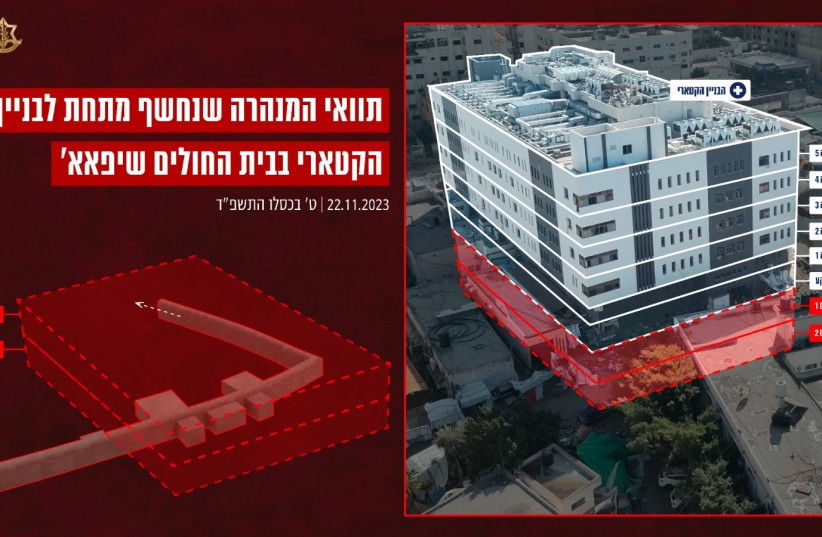
The Post entered Shifa after crossing five or six checkpoints coming in from Kibbutz Be’eri near the border.
Initially, the journey was in jeeps across the no-man’s land fences between Israel and Gaza, which Hamas had bulldozed to carry out its October 7 massacre.
Next, there was a stage of crossing through the northern Gaza outskirts, with some “built-up” areas, though, since the war, all of these areas were destroyed, with mere shells of houses and buildings left in what has become a wasteland.
No Palestinians were to be seen anywhere in any of these areas, though the Post witnessed around 1,000 IDF troops split mostly into units of 10-50 in a variety of locations, along with tanks, D9s, and many other vehicles.
Eventually, the Post came to the famed Gaza beach area, which clearly once boasted fancy hotels, children’s attractions, and the full range of beach life.
All of that was shattered and steamrolled by the war.
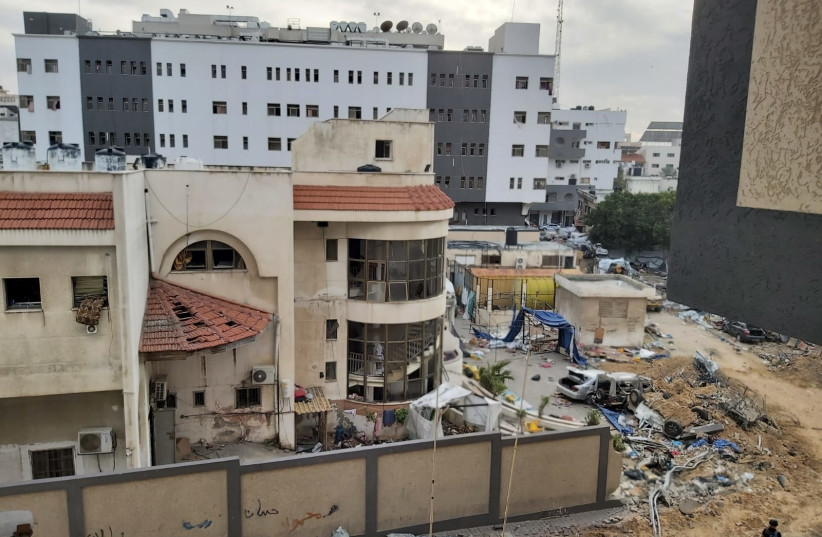
After some minutes driving along the Gaza beach, the Post entered the highly armored “Nimarim” which sources say have been able to take hits by five to eight Hamas anti-tank missiles and continue on their missions.
The armored vehicles have no regular windows for the approximately eight passengers, except one which can be opened on top and which the IDF forces opened once, they said, in order to better navigate a narrow area without crashing.
Mostly, the driver navigates with help from an additional soldier who has a highly sophisticated camera that shows the street ahead and behind.
The noise from the Nimarim was intense, but it felt more secure when entering the heart of Gaza City where Shifa is located.
On the way out of Gaza, the bleakness of what was left of Gaza City stood out starkly since some of the initial fear of what would greet us at Shifa had subsided and it was easier to look directly at the multi-year challenge of what rebuilding Gaza will look like... whenever the war is over and the future fate of Gaza is decided.